Below-the-line (BTL) campaigns have become an increasingly vital part of an effective marketing strategy. As brands strive to connect with their target audience on a more personal level, understanding the key insights and strategies of successful BTL campaigns is crucial. By analyzing case studies of notable BTL campaigns, we can gain valuable learnings to enhance our marketing efforts.
Key Takeaways:
- Studying successful BTL campaigns provides valuable insights to enhance marketing efforts
- Effective BTL campaigns require understanding the best practices and objectives
The Importance of Below-the-Line (BTL) Campaigns
Before diving into specific BTL campaign insights, it’s essential to understand the importance of below-the-line campaigns. BTL marketing is a strategy that focuses on targeted, direct communication with potential customers rather than mass advertising. BTL campaigns can be more cost-effective than above-the-line (ATL) campaigns, which includes TV and radio ads, billboards, and print ads. BTL campaigns include things like in-store promotions, direct mail, sponsorship, sampling, and experiential marketing.
Successful BTL campaigns are characterized by their ability to reach the right audience with personalized messaging, creating a lasting impression of the brand. Through real case studies, we can see how brands have achieved success through their BTL campaigns. One example is The Share a Coke Campaign, which personalized Coke bottles with popular names, inspiring people to buy them for themselves and as gifts for others. The campaign was so successful that it was repeated in several countries over the years.

Another example is the Red Bull Stratos campaign, where Red Bull sponsored a daring space jump by Felix Baumgartner. The marketing campaign was well-coordinated and integrated, with the jump broadcasted live on television and available to stream online. The campaign was aimed at generating buzz and excitement while positioning the brand as daring and innovative. The event drew massive attention, with over 50 million viewers watching the live broadcast.
Defining BTL Campaigns and Their Objectives
Below-the-line (BTL) campaigns are marketing efforts that are not directly aimed at mass audiences through traditional advertising media such as television, radio, and print. Instead, they are targeted at specific consumer segments using non-mass communication channels such as email, direct mail, and point-of-sale promotions.
The objectives of a BTL campaign are to create direct interaction with the target audience, increase brand awareness, and stimulate immediate behavior change or action. BTL campaigns aim to build closer relationships with consumers, focus on their individual needs and preferences, and provide personalized solutions to specific problems. The success of BTL campaigns can be measured by the level of engagement and response from the target audience, as well as the impact on brand perception and purchasing behavior. Successful BTL campaigns often utilize a combination of experiential marketing, direct mail, in-store promotions, and event marketing to create memorable and impactful experiences for consumers. By focusing on the individual consumer and creating personalized interactions, successful BTL campaigns can drive brand loyalty and long-term customer satisfaction.
Successful BTL campaigns share a few common characteristics. They are highly targeted, designed to reach specific audience segments with tailored messages and promotions. They are also data-driven, using consumer insights and analytics to inform campaign design and execution. Most importantly, they leverage personalization and interactivity to engage and motivate consumers to take desired action.

“Successful BTL campaigns share a few common characteristics. They are highly targeted, data-driven, and leverage personalization and interactivity to engage and motivate consumers to take desired action.”
Analyzing BTL Campaign Performance Metrics
Measuring the performance of BTL campaigns is essential to gain valuable insights. By analyzing various performance metrics, you can understand the effectiveness of different strategies and tactics used in your BTL campaigns. Here are some of the key performance metrics to consider:
- Brand awareness: This metric measures the extent to which your brand is recognized within your target audience. You can track brand awareness by measuring metrics such as website traffic, search engine rankings, and social media engagement.
- Conversion rate: This metric measures the percentage of prospects who take a desired action, such as making a purchase or signing up for a newsletter, after engaging with your BTL campaign.
- Return on investment (ROI): This metric measures the financial return you gain on your investment in a BTL campaign. To calculate ROI, you need to subtract the cost of the campaign from the revenue generated and divide the result by the cost of the campaign.
- Customer engagement: This metric measures how much customers interact with your brand after engaging with your BTL campaign. You can track customer engagement by measuring metrics such as social media likes, comments, and shares.
- Lead generation: This metric measures the number of leads generated through your BTL campaign. You can track lead generation by measuring metrics such as website form submissions, email signups, or app downloads.
By analyzing these metrics, you can optimize your BTL campaigns to improve performance and drive better results.
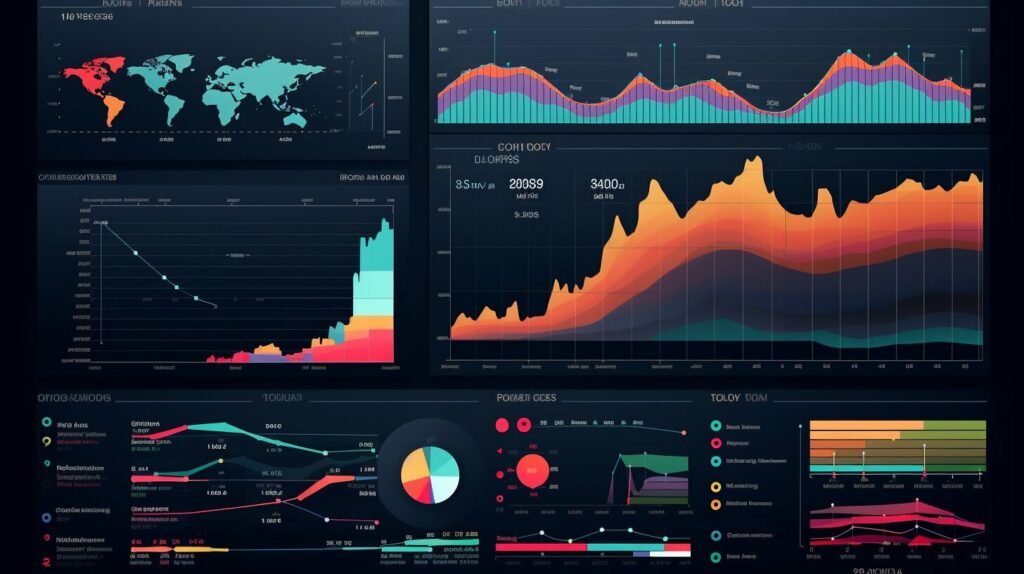
The Role of Experiential Marketing in Below-the-Line (BTL) Campaigns
Experiential marketing is a powerful strategy in BTL campaigns, providing a unique way to engage and connect with consumers. By creating immersive experiences, brands can make a lasting impression and drive positive brand associations.
One successful example of experiential marketing in BTL campaigns was Red Bull’s Stratos project in 2012. The energy drink company sponsored Felix Baumgartner’s record-breaking high-altitude skydive, creating an unforgettable experience for viewers. Red Bull created an immersive experience by livestreaming the event on YouTube, engaging millions of viewers and earning extensive media coverage. The Stratos project enabled Red Bull to drive awareness and engagement for its brand, while also connecting with consumers on an emotional level.
To create an effective experiential marketing campaign, it’s essential to understand your target audience and their needs. Brands should aim to create experiences that resonate with their target audience, providing significant value and engagement. Personalization is also essential in experiential marketing, creating unique experiences that cater to individual preferences and interests.
| Key Takeaways: |
|---|
| Embrace creativity: Experiential marketing provides an opportunity to think outside the box and create unique experiences that resonate with your target audience. |
| Personalization is key: By creating personalized experiences, brands can enhance engagement and drive positive associations with their brand. |
| Engage emotions: Experiential marketing should aim to evoke strong emotions and create a lasting impact on the target audience. |
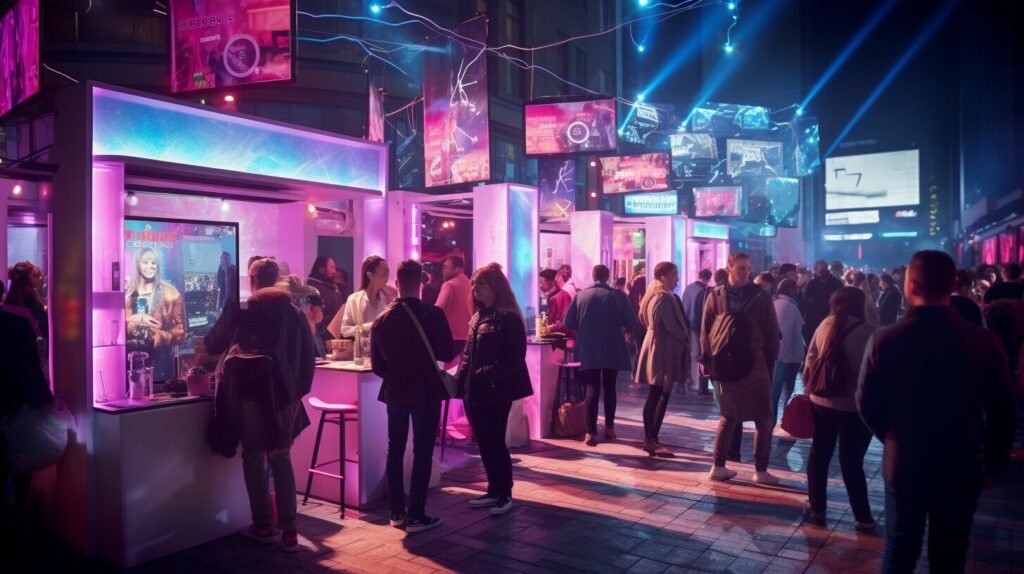
Overall, experiential marketing is a powerful strategy for BTL campaigns, providing a unique way to engage with consumers and foster positive brand associations. By embracing creativity, personalizing experiences, and engaging emotions, brands can create memorable campaigns that drive meaningful results.
Personalization and Targeting in BTL Campaigns
Personalization and targeting plays a crucial role in capturing the attention of consumers in below-the-line (BTL) campaigns. By tailoring campaigns to specific audience segments, brands can create a more engaging and impactful experience for their target audience.
One effective approach to personalization is creating customized experiences based on consumer data. For instance, a company could create a personalized event for customers who recently made a purchase or attended a previous event. By tailoring the event to their interests or preferences, the company can create a memorable experience that reinforces their brand and strengthens customer loyalty.
Another effective strategy for targeting is micro-segmentation, which involves dividing a broad target audience into smaller, more specific groups. By creating targeted campaigns for each segment, brands can cater to their unique needs and preferences. For instance, a company that sells outdoor gear could create separate campaigns for hikers, campers, and climbers. By tailoring the messaging and offers to each group, the company can create more relevant and compelling campaigns that resonate with their target audience.
Moreover, personalization and targeting can be enhanced by creating multi-channel campaigns that leverage different platforms, such as email, social media, and direct mail. By using data-driven insights to identify the channels that resonate most with specific segments, brands can create more effective campaigns that drive engagement and conversion.
Overall, personalization and targeting are critical success factors for BTL campaigns, enabling brands to create more engaging and impactful experiences that resonate with their target audience.

The Role of Social Media in BTL Campaigns
Social media has become an integral part of below-the-line (BTL) campaigns, with platforms like Facebook, Instagram, Twitter, and LinkedIn providing unique opportunities to connect with consumers. By incorporating social media into your BTL campaigns, you can amplify their reach and impact, creating a more engaged and interactive experience for your target audience.
One key advantage of social media in BTL campaigns is its ability to facilitate real-time communication and feedback. By leveraging platforms like Twitter and Instagram, brands can interact with consumers and respond to their comments and queries, creating a more personalized and responsive experience. This can help build brand loyalty and trust, as consumers feel more connected to the brand and perceive it as more approachable and responsive.
Another way to leverage social media in BTL campaigns is to create engaging and interactive content. By using Facebook Live or Instagram Stories, for example, brands can create immersive experiences that involve consumers in the campaign and encourage them to share their experiences and feedback. This can help spread awareness and drive engagement, as consumers feel more invested in the campaign and more likely to share it with their own social networks.
In addition, social media can be used to target specific audiences and demographics, allowing brands to create more personalized and relevant campaigns. By using tools like Facebook Ads and LinkedIn Ads, brands can target users based on factors like age, gender, location, and interests, ensuring that their campaign reaches the right audience. This can help increase the effectiveness and impact of the campaign, as it resonates more with the target audience and leads to higher engagement and conversion rates.
Overall, social media is a powerful tool for enhancing BTL campaigns, allowing brands to connect with consumers in new and innovative ways. By incorporating social media into your BTL campaigns, you can create engaging and interactive experiences that drive meaningful results and build long-term brand loyalty.

The Role of Influencer Marketing in BTL Campaigns
Influencer marketing has become an increasingly popular strategy in BTL campaigns, and for good reason. Collaborating with influencers can help brands to reach new audiences, boost engagement, and elevate their brand image.
When planning an influencer marketing campaign, it’s important to identify the right influencers for your brand, based on their relevance to your target audience, engagement rates, and overall reach.
One successful example of influencer marketing in BTL campaigns is the partnership between Adidas and Kylie Jenner. By collaborating with the popular influencer, Adidas was able to create buzz around their Falcon sneaker release and appeal to a younger, fashion-forward audience.
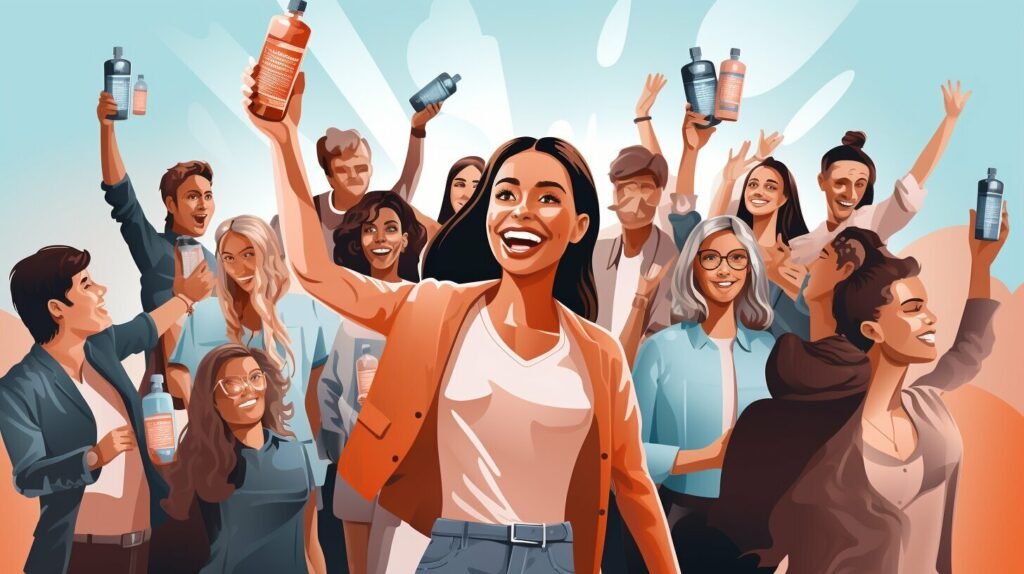
It’s worth noting that in recent years, consumers have become more discerning when it comes to influencer marketing, with many preferring authentic recommendations and transparency. Therefore, it’s important to ensure any influencer collaborations are in line with your brand values, and that the influencer clearly discloses any sponsored content.
Overall, influencer marketing can be a highly effective strategy in BTL campaigns, helping to build brand awareness, drive engagement, and reach new audiences. By carefully selecting the right influencers, creating authentic collaborations, and ensuring transparency, brands can successfully integrate influencer marketing into their BTL campaigns.
Creative Approaches and Innovations in BTL Campaigns
Creativity and innovation are essential ingredients in making a BTL campaign stand out from the crowd. To succeed in today’s competitive marketplace, brands need to think outside the box and explore new approaches. Here are some notable creative approaches and innovations in BTL campaigns that can inspire your own campaigns.
Interactive Installations
Interactive installations are a fun and engaging way to connect with your audience. These installations can be anything from pop-up shops to branded art exhibits. One notable example is the “Like a Bosch” campaign by Bosch Power Tools. They created a pop-up shop where visitors could create their personalized tool kits and get a chance to win prizes. By creating an immersive experience, Bosch effectively connected with their target audience and drove engagement with their brand.
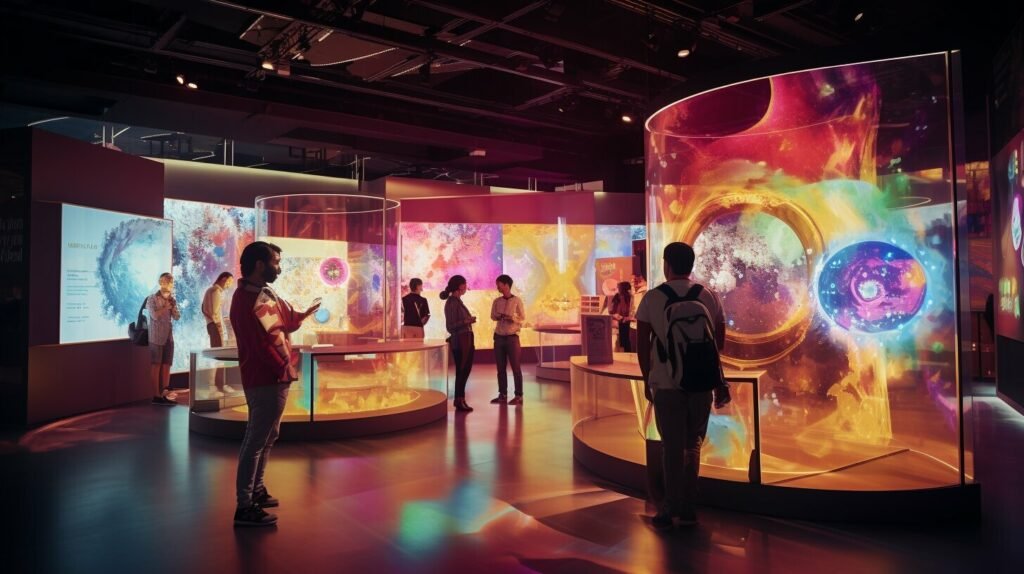
Guerrilla Marketing
Guerrilla marketing is a strategy that involves unconventional and low-cost tactics to promote a brand or product. One creative example is the “Pothole Gardens” campaign by the environmental organization Greenpeace. They created miniature gardens in potholes on the streets of London to raise awareness about air pollution. The campaign garnered wide attention and effectively conveyed the message to the target audience.
Virtual Reality
Virtual reality is a technology that has revolutionized the advertising industry. It provides an immersive and interactive experience that captures the attention of consumers. One notable example is the “IKEA Virtual Reality Showroom” campaign. IKEA created a virtual reality showroom that allowed customers to experience their products in a realistic setting before making a purchase. By leveraging technology, IKEA created a unique and engaging experience for their customers.
Cause Marketing
Cause marketing is a strategy that involves aligning your brand with a social or environmental cause. One creative example is the “Trash Isles” campaign by the environmental organization Plastic Oceans and the media company LadBible. They created a fictional country called “Trash Isles” made entirely of plastic waste in the ocean and petitioned for its recognition as a country. The campaign raised awareness about plastic pollution and effectively conveyed the message to the target audience.
By embracing creativity and innovating in your BTL campaigns, you can effectively connect with your audience and drive engagement with your brand.
Case Studies of Notable BTL Campaigns
In this section, we will analyze some of the most successful BTL campaigns and identify the key factors that contribute to their success. By understanding these case studies, you can gain valuable insights into the BTL campaign strategies implemented by leading brands. Studying these successful BTL campaigns will provide a roadmap for developing your own effective strategies. Whether it’s creating compelling messaging, leveraging the power of social media, or executing innovative guerrilla marketing tactics, there are numerous ways to enhance your campaigns based on the best practices of top BTL campaigns. By learning from these industry leaders, you can elevate your BTL marketing efforts and achieve better results for your brand.
Doritos “Crash the Super Bowl”
Doritos’ “Crash the Super Bowl” campaign invited consumers to submit their own homemade commercials for a chance to be aired during the Super Bowl. The campaign generated immense excitement among fans, with over 4,500 entries and 170 million views. The key to its success was its engagement of the brand’s target audience, allowing them to become part of the campaign’s success.
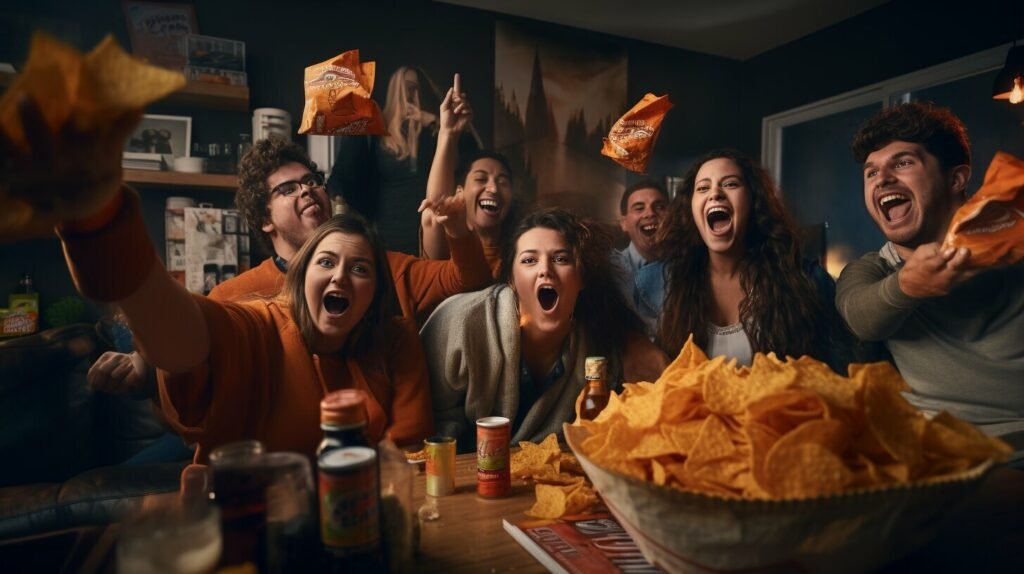
Starbucks #RedCupContest
Starbucks’ #RedCupContest campaign encouraged customers to share their festive photographs using the company’s iconic red cups on social media. The campaign generated massive engagement, with over 40,000 photos shared on Instagram alone. The success of the campaign was due to its simplicity and ability to create excitement with customers.
Coca-Cola “Share a Coke”
Coca-Cola’s “Share a Coke” campaign personalized bottles with customers’ names, encouraging them to share a coke with their friends and family. The campaign generated significant buzz, with over 150 million personalized bottles sold in the US alone. The key to its success was its powerful emotive appeal and the use of personalization to create a unique connection with customers.
Budweiser “Whassup?”
Budweiser’s “Whassup?” campaign was a viral sensation that captured the attention of its target audience. The humorous catchphrase and relatable characters helped the campaign achieve widespread success, including a Grand Prix at Cannes Lions. The key to its success was its ability to connect with customers on a personal level and its ability to create an emotional bond with its audience.
These case studies demonstrate the effectiveness of various BTL campaign strategies and highlight the importance of engaging with customers in a meaningful way. By studying successful campaigns such as these, you can gain insights into what works and how you can apply these strategies to your BTL campaigns.
Conclusion
By studying the key insights and strategies from successful below-the-line (BTL) campaigns, you can enhance your marketing efforts and create impactful campaigns. It’s important to first understand the importance of BTL marketing and define the objectives and best practices for your campaigns. Measuring the performance of your BTL campaigns is essential to gaining valuable insights and improving their effectiveness.
One effective strategy is leveraging experiential marketing to create immersive experiences that engage your target audience. Personalization and targeting also play a vital role in capturing consumer attention and maximizing the impact of your campaigns. Social media integration is becoming increasingly important, and collaborating with influencers can enhance the success of your BTL campaigns. Finally, embracing creativity and innovation can set your campaigns apart and create memorable experiences for your audience.
Key takeaways:
- Define your BTL campaign objectives and best practices
- Measure the performance of your campaigns to gain valuable insights
- Leverage experiential marketing to engage your target audience
- Personalize and target your campaigns to maximize impact
- Incorporate social media to amplify reach and impact
- Collaborate with influencers to enhance success
- Embrace creativity and innovation to create memorable experiences
By implementing these strategies and taking inspiration from successful BTL campaign case studies, you can create impactful and successful campaigns that drive meaningful results.
What Are the Impacts of Notable BTL Campaigns on Social Media?
The notable BTL campaigns on social media are revolutionizing marketing strategies. Social media’s impact on btl strategies is immense, allowing brands to engage with a wider audience, build credibility, and generate leads. It creates an interactive platform where companies can directly communicate with customers, promoting brand awareness and influencing purchasing decisions. The power of social media enhances BTL campaigns, amplifying their effects and maximizing their reach.
What are Some Sustainable and Socially Responsible Practices in Below-The-Line Marketing?
Sustainable btl practices in below-the-line marketing focus on minimizing environmental impact and promoting social responsibility. These include using eco-friendly materials in promotional giveaways, incorporating ethical sourcing and production methods, implementing responsible waste management, and supporting community initiatives. By adopting these practices, companies can create a positive brand image while contributing to a greener and more socially conscious world.
What are the Key Strategies and Insights from Notable BTL Campaigns that can be Applied to Technology Integrated Campaigns?
Effective technology integration in BTL campaigns can help businesses reach their target audience more effectively. By utilizing innovative digital tools and platforms, BTL campaigns can create personalized and interactive experiences for consumers. This approach can also provide valuable insights into consumer behavior and preferences, which can be applied to future technology integrated campaigns.
FAQ
Q: What are some key insights and strategies derived from notable BTL campaigns?
A: Key insights and strategies derived from notable BTL campaigns include analyzing campaign performance metrics, leveraging experiential marketing, personalization and targeting, incorporating social media, collaborating with influencers, and embracing creativity and innovation.
Q: Why are below-the-line (BTL) campaigns important?
A: Below-the-line campaigns are important because they can create impactful marketing efforts and drive successful campaigns. They also provide opportunities to engage the target audience through personalized and targeted approaches.
Q: What are the objectives of BTL campaigns?
A: The objectives of BTL campaigns include capturing the attention of consumers, increasing brand awareness, driving conversions, and enhancing customer engagement.
Q: How can BTL campaign performance be measured?
A: BTL campaign performance can be measured through various metrics, such as reach, engagement, conversion rates, and return on investment (ROI). By analyzing these metrics, valuable insights can be gained to optimize campaign strategies.
Q: How can experiential marketing be leveraged in BTL campaigns?
A: Experiential marketing can be leveraged in BTL campaigns by creating immersive brand experiences that engage the target audience. This can be achieved through interactive events, pop-up activations, and unique brand experiences.
Q: How can personalization and targeting be utilized in BTL campaigns?
A: Personalization and targeting can be utilized in BTL campaigns by tailoring messages and experiences to specific audience segments. This can be done through audience segmentation, data-driven targeting, and personalized content.
Q: How can social media be incorporated into BTL campaigns?
A: Social media can be incorporated into BTL campaigns by leveraging platforms to amplify campaign reach, engage with the audience, and create shareable content. This can include creating social media contests, utilizing hashtags, and partnering with influencers.
Q: What is the role of influencer marketing in BTL campaigns?
A: Influencer marketing can play a significant role in BTL campaigns by collaborating with influential individuals to promote brands and products. This can help increase brand credibility, reach new audiences, and generate word-of-mouth marketing.
Q: What are some creative approaches and innovations in BTL campaigns?
A: Creative approaches and innovations in BTL campaigns can include interactive installations, augmented reality experiences, gamification, and immersive storytelling. These approaches help captivate the audience and create memorable brand experiences.
Q: Can you provide examples of notable BTL campaigns?
A: Yes, notable BTL campaigns include the Coca-Cola “Share a Coke” campaign, the Red Bull “Stratos” campaign, and the Nike “Just Do It” campaign. These campaigns were successful in engaging audiences and achieving their objectives.





